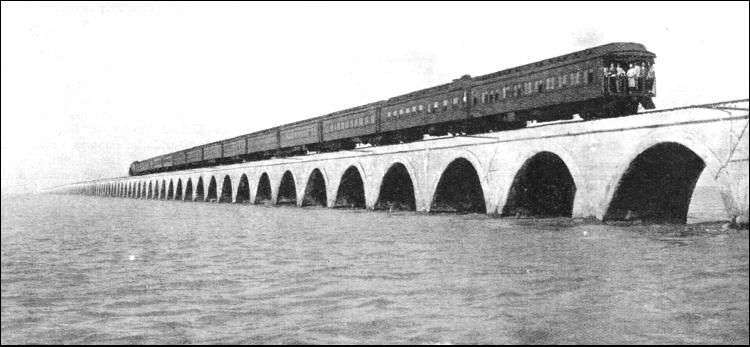When Henry Morrison Flagler saw through the window the 100,000 people who went to meet him at the station, he didn’t know he had only 1 year, 3 months and 27 days to live. Son of a time when humanity became gigantic in nature, the man tried to tame the waves and belittle the sea. On his bedside table, a map with a railroad linking New York with Key West, and then from Key West and Havana was drawn. When the project began, in the early twentieth century, many christened it as “The Chimera of Flagler”.
Metaphorically, some people think that a train is always a moving island. Perhaps it was due to the analogy of the enclosure, or dependency on external supplies, or to paraphrase Virgilio Piñera by “the damn circumstances of a railroad everywhere around us”. The truth is that the famous express that would New York with Havana rose that comparison to implausible levels.
For over 20 years, there was the route known as “Havana Special”: the passenger bought a ticket in the Big Apple, and without leaving the car even for a moment, again touched land in Havana two days later. The tour could also be done in reverse, even departing from Santiago de Cuba. Seen from today, it seems a heresy.
But to realize the “Chimera”, engineers must gather what nature had insisted in distancing for thousands of years: the cays and islets of South Florida with the mainland of North America. In 1905, the Florida East Coast Railway began expanding, owned by Henry Flagler- from Miami to Key West, a distance of 206 kilometers.
After seven years, $ 50 million, 4000 workers, two hurricanes, the struggle against the water trying to recover what the man took from it, finally Henry Flagler managed to get in his private car to Key West, with the weakness of his 82 years of age, on January 22, 1912 at 10:43 am. Less than three months later, at the other end of the world, the sea would swallow the most famous ship of all time, perhaps presaging the price of human daring.
The day of his arrival in Key West, the veteran American entrepreneur left for Havana to promote the new route of his company. Soon, Flagler managed to assemble the rail convoy with the ferry-boats that crossed the Straits of Florida. Within hours, the load ran the 90 miles that separate the two shores.
“The Chimera of Flagler” as the fantasy it was also had its awakening. In 1935 a Category 5 hurricane heavily damaged bridges of the Miami-Key West stretch. A relief train that sought to rescue another in Key Largo was swallowed by the tide. The Florida East Coast Railway company could not afford the damage and sold the property to the local state.
Henry Morrison Flagler, who died on May 20, 1913, never heard about the collapse of his dream. Maybe in the year and four months he survived the maiden voyage of the “rail over the sea,” he taunted the superiority of American art over the English, who could not avoid the sinking of Titanic. In the end, nature also made him pay for his audacity.










